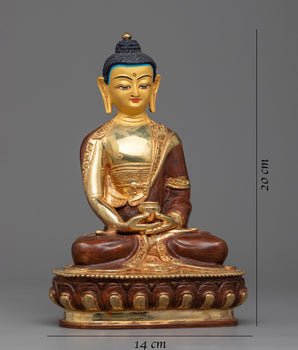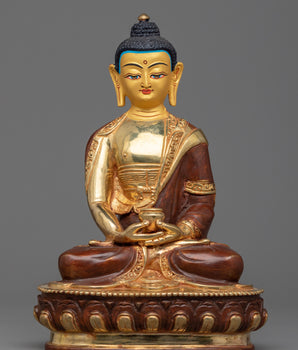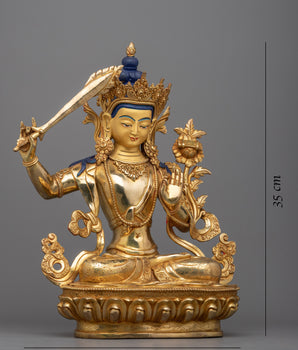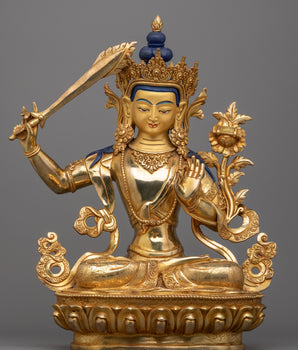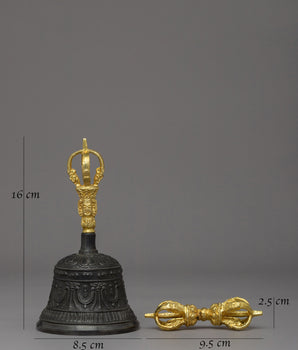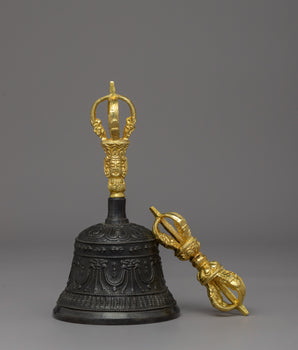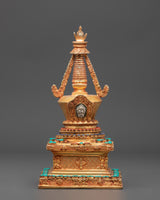
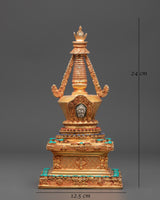
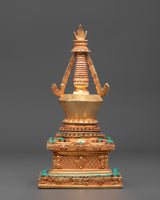
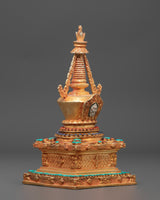
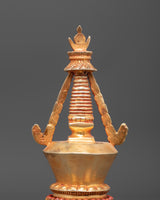
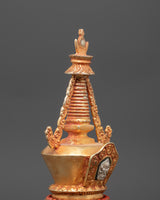
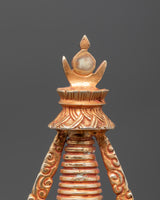
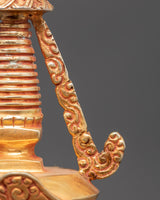
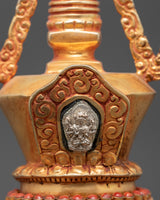
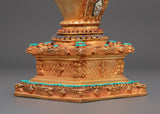
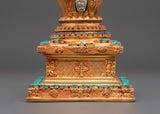
Golden Stupa for Ceremonies | Path to Enlightenment

100% AUTHENTIC

HANDMADE

FREE SHIPPING
Tibetan Golden Stupa for Ceremonies | Electro Gold-Plated Stupa
--------------------------------------------------
Size: 24cm(Height) x 12.5cm(Width)
Weight: 1.28kg
Materials: Copper Body, Electro Gold Plated, Artificial Stones: Coral, Lapis Lazuli, Turquoise
--------------------------------------------------
About Our Ritual Item :
This Golden Stupa for Ceremonies is a stunning symbol of enlightenment and sacred energy, representing the Buddha's body, speech, and mind. This stupa, which stands 24cm tall and 12.5cm wide, weighs 1.28kg and is expertly fashioned from copper, electro-gold-plated to reflect its divine magnificence. The jewelry is adorned with faux coral, lapis lazuli, and turquoise stones, exuding vibrancy and spiritual harmony. Traditionally, stupas have been utilized in Buddhist rites and temple ceremonies to represent the awakened state, purity, and the path to enlightenment.
The stupa's base is artistically etched with floral and geometric designs, while the climbing spire is embellished with ornate decorations representing the phases of spiritual advancement. The radiance of wisdom that dispels ignorance. Each gemstone has its unique meaning: turquoise for healing and protection, coral for vitality, and lapis lazuli for insight. This sacred Tibetan ceremonial stupa serves as a focal point for meditation, devotion, and offerings, sending blessings and spiritual merit to all beings.
In Tibetan Buddhism, the stupa (or chorten) represents both the Buddha's enlightened intellect and the cosmic structure of the universe. It is thought that putting a stupa in one's home or temple provides tranquility, prosperity, and spiritual advancement. This Golden Stupa for Ceremonies exemplifies holy artistry while also acting as a powerful vehicle of blessings and spiritual transformation.
Introduction To Stupa :
Before Buddhism, great teachers were buried in mounds. Some were cremated, but sometimes they were buried in a seated, meditative position. The mound of earth covered them up. Thus, the domed shape of the stupa came to represent a person seated in meditation, much as the Buddha was when he achieved Enlightenment and knowledge of the Four Noble Truths. The base of the stupa represents his crossed legs as he sat in a meditative pose. The middle portion is the Buddha’s body, and the top of the mound, where a pole rises from the apex surrounded by a small fence, represents his head. Before images of the human Buddha were created, reliefs often depicted practitioners demonstrating devotion to a stupa.
How to Set Up Your Own Buddhist Shrine?
• Find a clean, quiet, and uncluttered spot
• Set up an altar table, and cover it with an altar cloth that calls to you
• Place your sacred item at the center
• If you want a more elaborate altar, you can put a Stupa as well
















